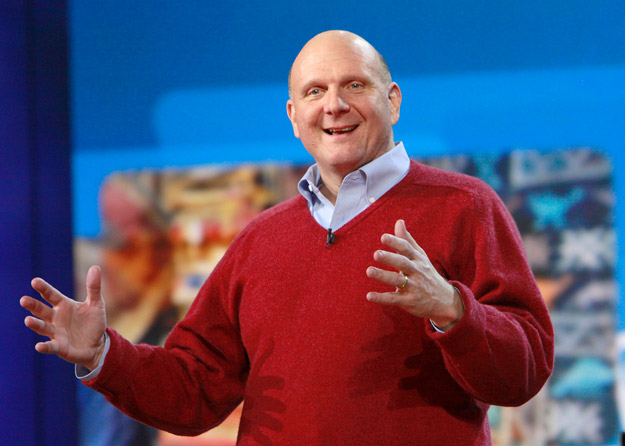Steve Ballmer Regrets Slow Pivot To Hardware While Serving As Microsoft's Exuberant CEO
In Ballmer’s absence, the company’s stock has nearly doubled from $36 to just over $70 per share. So, what is Nadella getting right that Ballmer seemingly got wrong during his 14-year reign as Microsoft CEO? Ballmer had a bit of self-reflection at this year’s Code Conference, and pointed to a lack of urgency in transitioning to hardware.
“I think I was too slow, in cases, to recognize the need for new capability. And particularly in hardware,” said Ballmer. “I wish we'd built the capability to be a world-class hardware company, because one of the new expressions of software is essentially the hardware, and I think we came to that later than I think the company should have built that under my leadership should have built that capability earlier than we did."
Microsoft never achieved the same type of success that Apple still enjoys in the smartphone market. Ballmer was once incredibly dismissive of the iPhone when it first landed on the scene, famously stating in 2007, “There’s no chance that the iPhone is going to get any significant market share. No chance. It’s a $500 subsidized item.”
However, Apple’s complete control over both hardware and software on the iPhone lead to an arguably more refined customer experience and allowed the company to profit handsomely from the sale of the devices. Ballmer realized the need for an in-house hardware arm and acquired Nokia’s Devices and Services division, but that purchase turned out to be a huge money pit for Microsoft and failed to improve its position in the smartphone market.
Ballmer also didn’t look too fondly on Microsoft’s early decision to use a software licensing model, which was fine for PC market, but not quite ideal for smartphones. "We tried to use all the same techniques, and the same techniques were never going to get us there,” added Ballmer. “We had the wrong monetization model, we had the wrong delivery model -- all of that, and it's because we didn't build new capability."
And although the Surface family was originally developed under Ballmer, it wasn’t until Nadella came onboard that the division began to really “make sense” for the company. Today, Microsoft has a full family of well-regarded Surface hardware, including the Surface Studio, Surface Pro, Surface Book and Surface Laptop. There are also lingering rumors that Microsoft will get back into the smartphone game with a Surface Phone.
(First Image Courtesy Microsoft/Flickr, Second Image Courtesy Long Zheng/Flickr)



